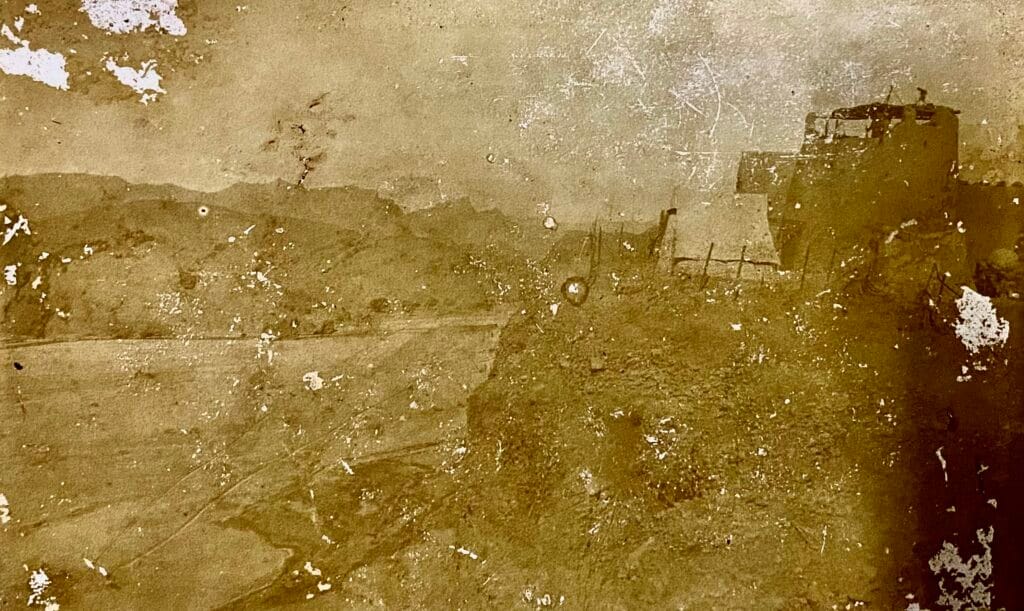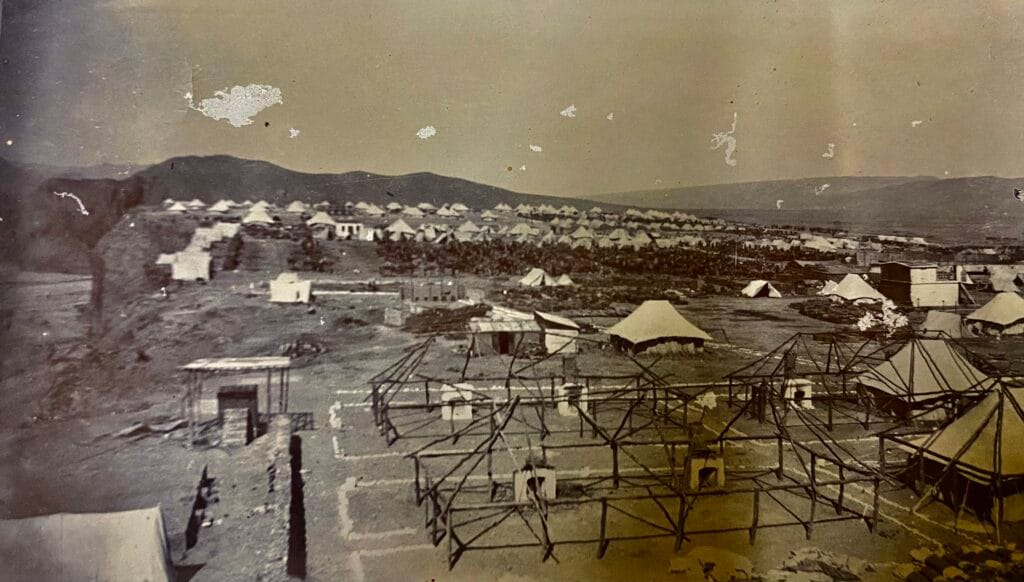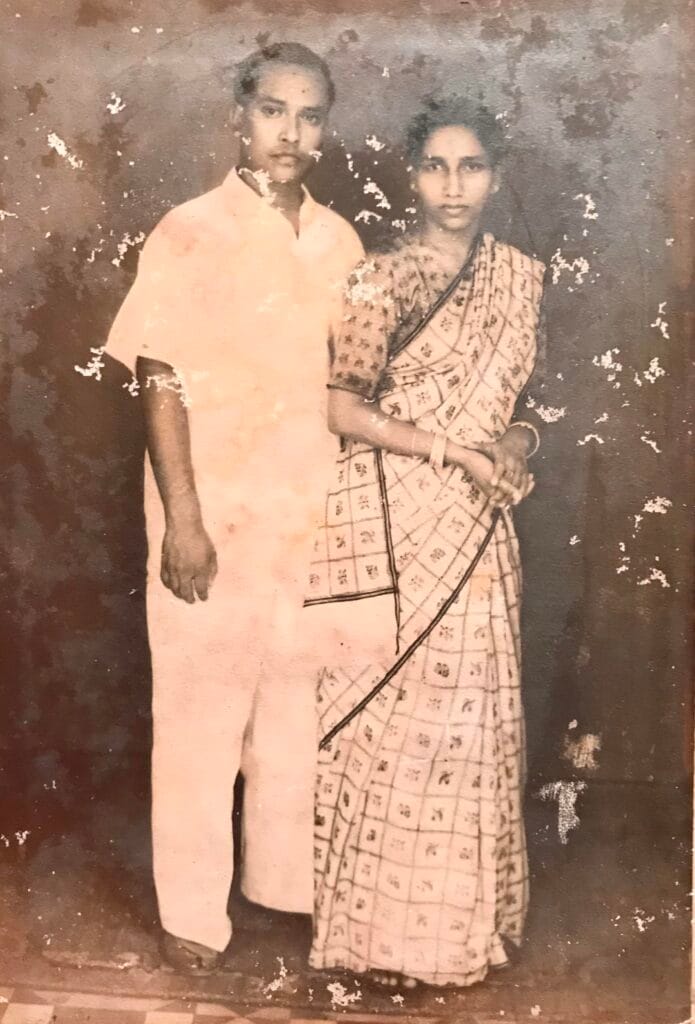TEXT AND PHOTOS BY SREYASH SARKAR
Prague, Czech Republic
Last year, on an unusually warm December evening, my mother’s paternal cousin, Indranil De, whom I call Babumama, laid out a series of old photographs in front of me. Smilingly, he said I would do justice to them. In wonderment, I looked closer to read the following words on a photograph of a gentleman staring out into the horizon – Photo by David, Dr. R.C Dey, Khirgi-Waziristan. There is a faint image behind him, either of a bridge or barbed wire. He stands upright, distinguished in his military uniform, the metal buttons shining despite the sepia tone of the photo.
‘Is that who I think it is?’ I asked excitedly. Babumama nodded.


It was indeed the family-legend, Dr. Ramesh Chandra De, my maternal great-grandfather, who was an army doctor in the First World War. Ever since I can remember, this name had been ingrained in me because of all the stories I’d heard and inherited. And now that photographs from his time during the War had been unearthed, I felt almost like I couldn’t breathe. I knew their historical value and how carefully they’d been preserved in family archive. They were weathered and faded, but what shone with clarity was my great-grandfather at the beginning of his professional life. Among them, a document caught my eye – Dr. R.C De’s medical certificate.
According to a paper in the Indian Journal of Community Medicine, the officers of the Indian Medical Service had mostly been surgeons of European origin, who qualified in England and were then sent over. But with the establishment of the Calcutta Medical College in 1835, the Medical Service opened up to Indians, who were trained in Calcutta and then selected to serve as subordinates or assistants to surgeons[i]. On April 9, 1875, the Bengal Government officially declared the foundation of Dacca Medical School, since a notable portion of students in at the Medical College in Calcutta came from East Bengal[ii].




It was from the Dacca Medical School that my great-grandfather received his, ‘licentiate’ and went on to become a sub-assistant surgeon in April 1911, also qualifying in Medico-legal work. The certificate states his birth year as 1885. The enormity of it all struck me then — this young man, embarking on a medical career just as the British Empire stood on the precipice of war. What I gather from family members is that he was first posted in the Khirgi-Waziristan division for traineeship, and then sent to the Aincourt, Seine-et-Oise in France for the rest of the War in the capacity of a surgeon, leaving my great-grandmother, Jibanbasini De, alone in charge of five children. From photographs, she looks an ethereal beauty, but stories of her cooking have long been family lore.
The stark contrast between the barren, rugged landscape of Khirgi-Waziristan, as captured in his photographs, and the lush, riverine plains of Bengal – or even Benares, where once the De household had been and the family owned a budgerow – was striking. It was an unforgiving terrain where my great-grandfather trained. Dusty valleys, distant hills, and sparse vegetation dotted with camps. One could imagine the endless rows of tents stretching across the valley, part of a vast network of encampments where Indian soldiers were trained to fight for the British Empire. Many of these men, like my great-grandfather, never imagined they would be sent to faraway lands to serve an empire not their own.


As I looked at Dr. R.C. De’s photographs of the British camps and Gorkha trainees in uniform at Khirgi-Waziristan, I shuddered to think of all the men who trained there, and all the lives eventually lost in war. What became of them, what stories were lived and told by them. I feel disturbed to think of how colonial Britain not only drained India and other colonies of their material wealth, but also of their people, marking a dent in the socio-economic fabric of the countries. Yet amidst this historical tragedy, I found solace in knowing that my great-grandfather’s role was that of a healer – a doctor whose mission was to save lives rather than take them.
After the War, Dr. De was posted in Assam as the Medical Director of the B.B Civil Hospital in Jorhat (as I gather from a certificate attesting his shares in Union Drug Company Ltd.) and a few years later, moved to Kolkata with his family. He breathed his last, on 23rd August 1948, in a newly independent India, at the Calcutta Medical College, in the company of his large, loving family leaving behind an enviable legacy of acute scholarship.


Sudhir Chandra De, my maternal grandfather, chose to follow in his father’s footsteps by also becoming a doctor. Born in Dhaka in 1919 at a tumultuous time in Bengal’s history, he was the eldest of Dr. R.C. De’s five children. Early in his career, at the age of 21 in the year 1940, my grandfather found himself appointed as the official physician at the notorious Andaman Cellular Jail. The stories of his experiences, as recounted by my mother, captivated and haunted me as a child, with vivid depictions of the jail’s grim maintenance, its intriguing jailers, and the complex lives of the incarcerated. These tales kept me awake at night, igniting my imagination and curiosity.
From his time in the Andamans are some photographs he took in the late 1940s. These provide a rare and invaluable glimpse into the appearance of the jail and the Andaman Islands before and after Indian independence, bearing witness to an era long passed. For example, there is a striking image of a young Javanese boy whom my grandfather calls Supardi, being brought to Port Blair by the Japanese. My grandfather and Supardi spent every day together, so much so that he had even taught him to do what a medical compounder would, though I wonder what language they would have communicated in. There are detailed photographs of the front and extended back side of the jail and an expansive view of Port Blair’s beautiful waters. My mother tells me that my grandfather was an avid photographer who won a prize at a competition in Dhaka in his youth. Looking at these frames and his verité style of shots, I now know why.


While my grandfather worked there as a physician, the Cellular Jail was teeming with freedom fighters from all over India. He had once remarked to my mother that, statistically speaking, a significant number of these prisoners hailed from the Bengal region, reflecting its fervent revolutionary spirit. From among these freedom fighters, he befriended a young prisoner named Surendra Mohan. Through diligent research and the NIC archives’ official list of freedom fighters incarcerated at the jail, I discovered that he was likely Surendra Mohan Kar Roy. Unfortunately, I have yet to find any sources depicting the life of this man who was captured and detained in the Andamans.
My grandfather also spoke of an elderly prisoner, Prafulla Kumar Sanyal3,4, who was almost on his deathbed. Prafulla was implicated in the Hili Mail Robbery case, which was connected to the Anushilan Samiti, the primary organization that performed armed revolutionary struggle throughout the northern India in the first half of the 20th century. By the late 1920s, it planned a series of activities in retaliation to British authority. But the party also faced a financial crisis and needed legal funds to defend many of their members accused and arrested throughout the 1930s around the country, now being tried in a collective trial called the Inter-Provincial Conspiracy Case’. The Hili dacoity was a desperate attempt by the party to meet these legal costs. A team of sixteen resolved to assault the Hili Railway Station, aiming to seize valuable contents from the postal mail chest. Prafulla was assigned the critical task of forcibly opening the wooden chest containing mail bags and retrieving the money, for which he was caught and imprisoned for life.


Among other political prisoners was Dr. Surendranath Nag3,4,5, who was falsely accused of espionage by the British militia. Dr. Nag served as an Assistant Surgeon in the Medical Department at Port Blair, and in April 1942, during the Japanese occupation, he became a member of the Indian Independence League (IIL). My grandfather witnessed firsthand the inhumane torture endured by Dr. Nag and other prisoners tried under similar charges. After returning safely to Calcutta, he received a letter from Dr. Nag, foretelling his tragic fate alongside six other prisoners. My grandfather later discovered that he had been executed by a Japanese firing squad near the seashore at Dugonabad. I verified this incident through the Cellular Jail archives, learning that Dr. Nag was indeed a resident of Aberdeen, South Andaman. However, little is known about the specifics of this alleged spy case and the rationale behind his execution by the Japanese.
The moral complexity of my grandfather’s role in such a politically charged setting left me conflicted. I wondered how he would have felt, whether he ever spoke to his father about the things he saw. He was only one generation removed from me, but the landscapes of his youth and mine could not have been more different. I imagine though that knowing his father had also served as an army doctor for the British Empire, he may have felt compelled to tend to the most anguished victims of imperialism—the imprisoned revolutionaries in Cellular Jail. He was tasked with performing the compulsory but tragic final check-up before the incarcerated would be hanged. But by caring for those who had endured brutal torture in their fight for independence, he may have sought to also ease their suffering, honouring their everyday struggle that ultimately freed India from the grasp of colonial greed. What he left behind, by way of these photographs – much like his father – is a record, a first-hand account in imagery of the lives and times that many of us would only encounter in history books.




Following his tenure in the Andamans, Sudhir’s marriage was arranged with Kalyani Guha, a graduate in Bengali Literature from Kolkata’s prestigious City College. He subsequently established his own medical practice in Howrah, where he served as an executive member and joint secretary of the Indian Medical Association’s Howrah branch. My mother, Prof. Pushpita Sarkar (née De) tells me how her father, along with other doctors, had set up free medical clinics in closely knit neighbourhoods of Howrah and greater Kolkata that treated thousands of patients. It therefore doesn’t come as a surprise that when he passed away in August 1988, the entire Howrah Bazar, shops, offices, shut down to mourn his death, as his body wrapped up in the communist party flag was taken to the burning ghat in a kilometer-long procession.
As I reflect on the extraordinary lives of my great-grandfather and grandfather, I am left in awe of their legacy. From the battlefields of Europe and the North-West Frontier to the notorious confines of the Andaman Cellular Jail, their stories span continents, eras, and ideologies. They were men who transcended their circumstances—driven by duty, compassion, and a love for knowledge and the arts. I wonder how much all of this translates for the future generation of the De’s. How valuable, how intimidating, how endearing and how utterly bewitching.

[i] Mushtaq MU. Public health in british India: a brief account of the history of medical services and disease prevention in colonial India. Indian J Community Med. 2009 Jan;34(1):6-14. doi: 10.4103/0970-0218.45369. PMID: 19876448; PMCID: PMC2763662.
[ii] Aishwaryarupa Majumdar. Medical Education on the Colonial Periphery: A Study of Medical Institutions in Patna and Dacca, Indian Journal of History of Science, 53.1 (2018) 33-49 DOI: 10.16943/ijhs/2018/v53i1/49362
3Armed Revolutionary Movement In Colonial Northern Bengal With Special Reference To Dinajpur District, Chandana Saha
4Bhattacharyya, M. S. (2002). Studies in Micro History. Calcutta: IIORS
5 https://amritmahotsav.nic.in/unsung-heroes-detail.htm?2870
6 https://db.and.nic.in/cellularjail/Stories/NameList.htm
7 https://amritmahotsav.nic.in/district-reopsitory-detail.htm?23274

Thank you for this fascinating glimpse into the lives of your grandfather and his father. As you said, it’s valuable, intimidating and bewitching.